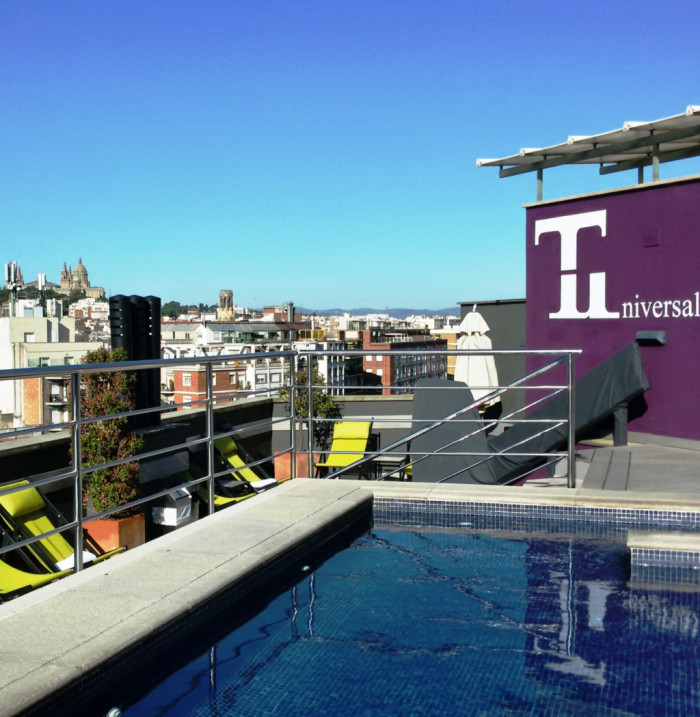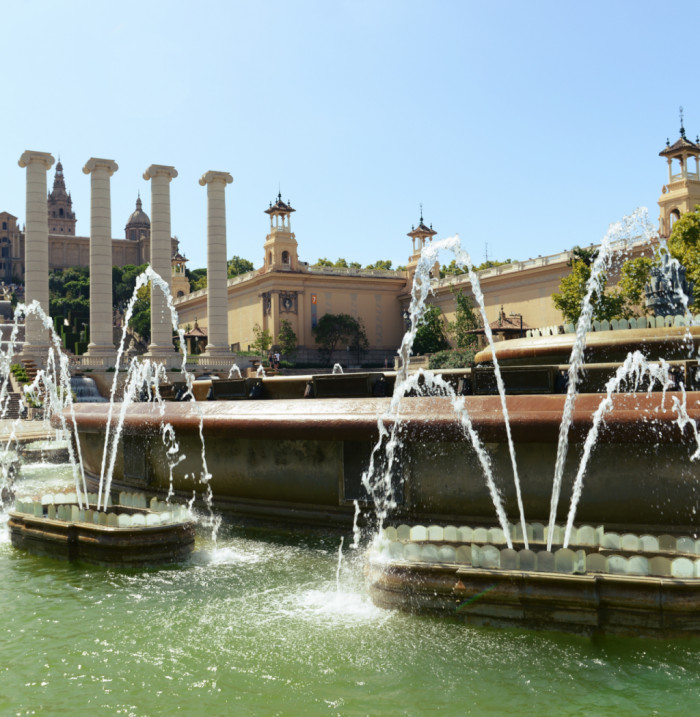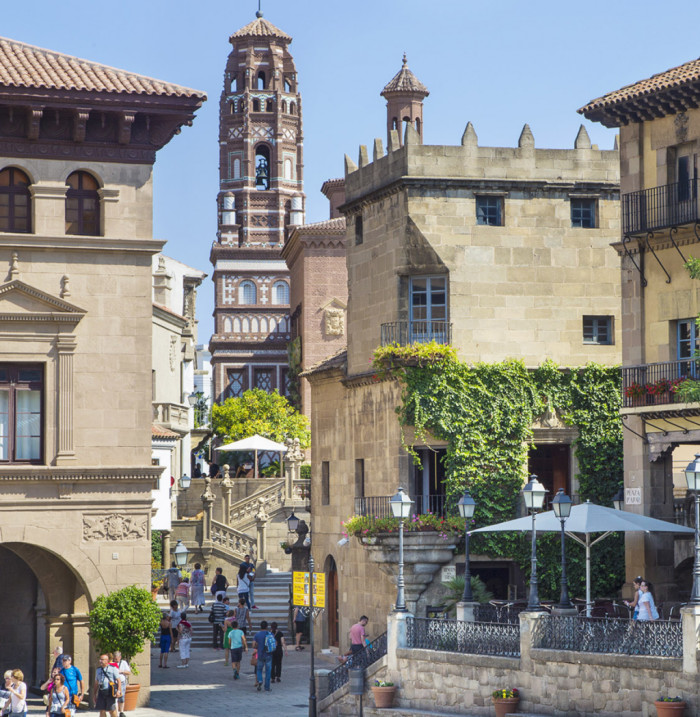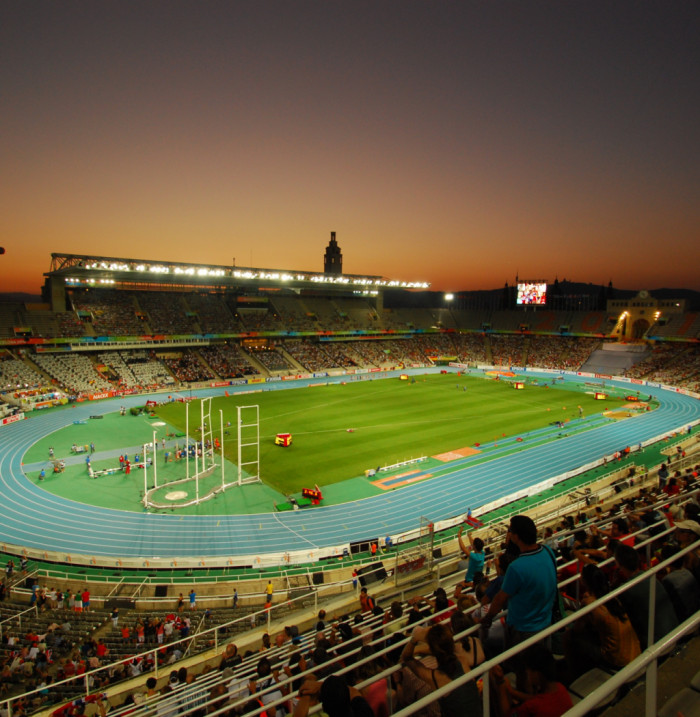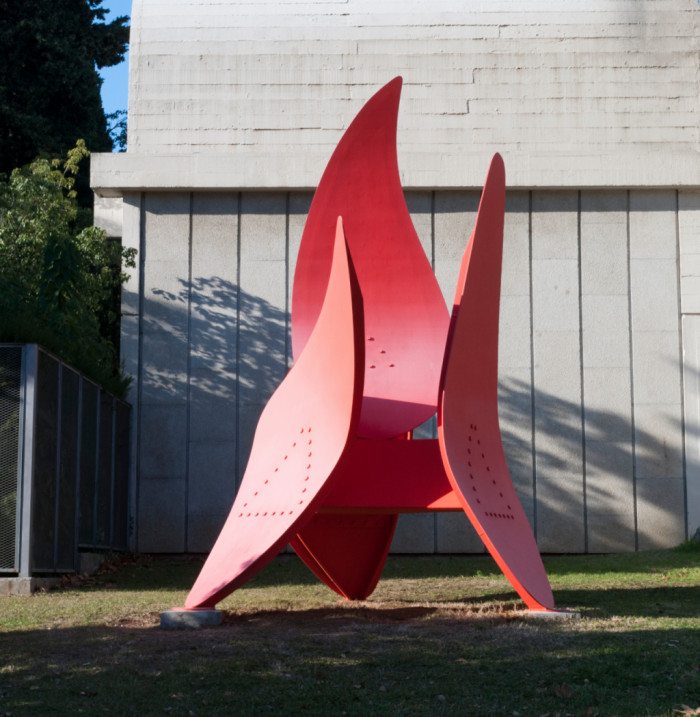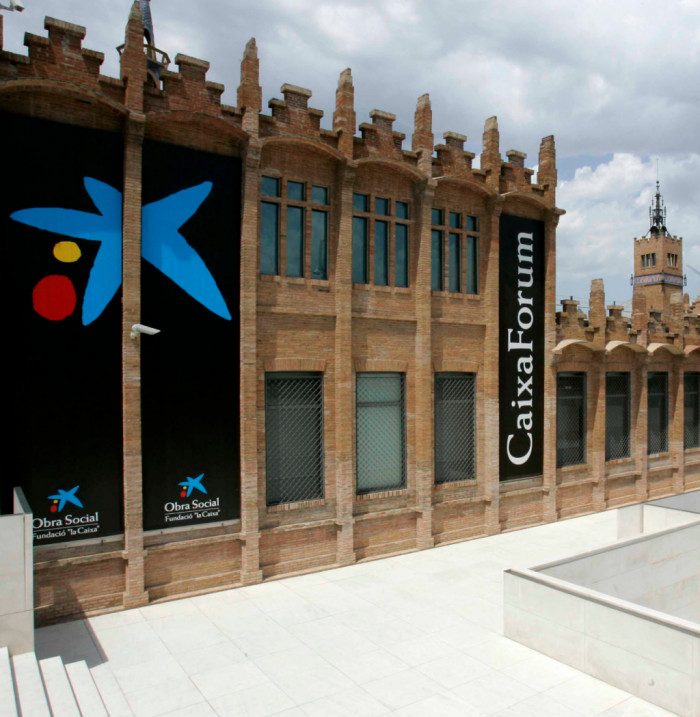- Open Air
- Sport
- Open Air
A sunny spot with flowerbeds, pergolas, and terraces, offering stunning views of the mountain of Montjuïc.
Metro: L3 (Green) - Poble Sec
Bus: 55, 121
If you take the Passeig de Santa Madrona, you’ll find yourself before an imperial staircase of grandiose dimensions, made of stone, and ascending on either side of a stone wall. You’ll also be standing at the front entrance to the Greek Theater Gardens. And from the same path, you can easily make out some of the garden’s most noteworthy features: the pergola, the old pavilion, and the vegetable patches watched over by tall trees.
The Greek Theater Gardens form part of the complex of gardens that were built on the mountain of Montjuïc in advance of the 1929 Barcelona International Exposition. Its principal aim was to connect the grand Plaza del Solstici with the foot of the Passeig de Santa Madrona, which at that time was home to the palaces of the International Exposition, overcoming 44-meter gradient.
Then in 1979, after some years of neglect, the gardens recuperated their artistic splendor when they were reborn as the headquarters of the Greek Festival, which is celebrated each year in Barcelona and features all kinds of theatrical and musical performances.
The gardens were given their current name by the famous amphitheater that sits just inside. The theater is the work of architect Ramón Reventós, who made the most of the slope of an old quarry, designing an amphitheater inspired by the classical Greek model.
One of the most remarkable things in the space is the large pergola covered in climbing plants that almost everyone stops to take a portrait in front of. Just beside the pergola, visitors can enjoy spectacular panoramic views overlooking Barcelona. And, if you venture up another flight of stairs, you’ll find yourself in a long, rectangular space decorated with blooming flowerbeds full of aromatic plants and orange trees, just side another balustrade that looks out over the Passeig de Santa Madrona. What makes the space stand out most is its stunning biodiversity. The climbing plants fill the walls, columns, and fences with color, while flowerbeds make a perfect home for lavender, African lilies, and clivias. Jasmine and rose bushes add vibrancy to the pergola.


